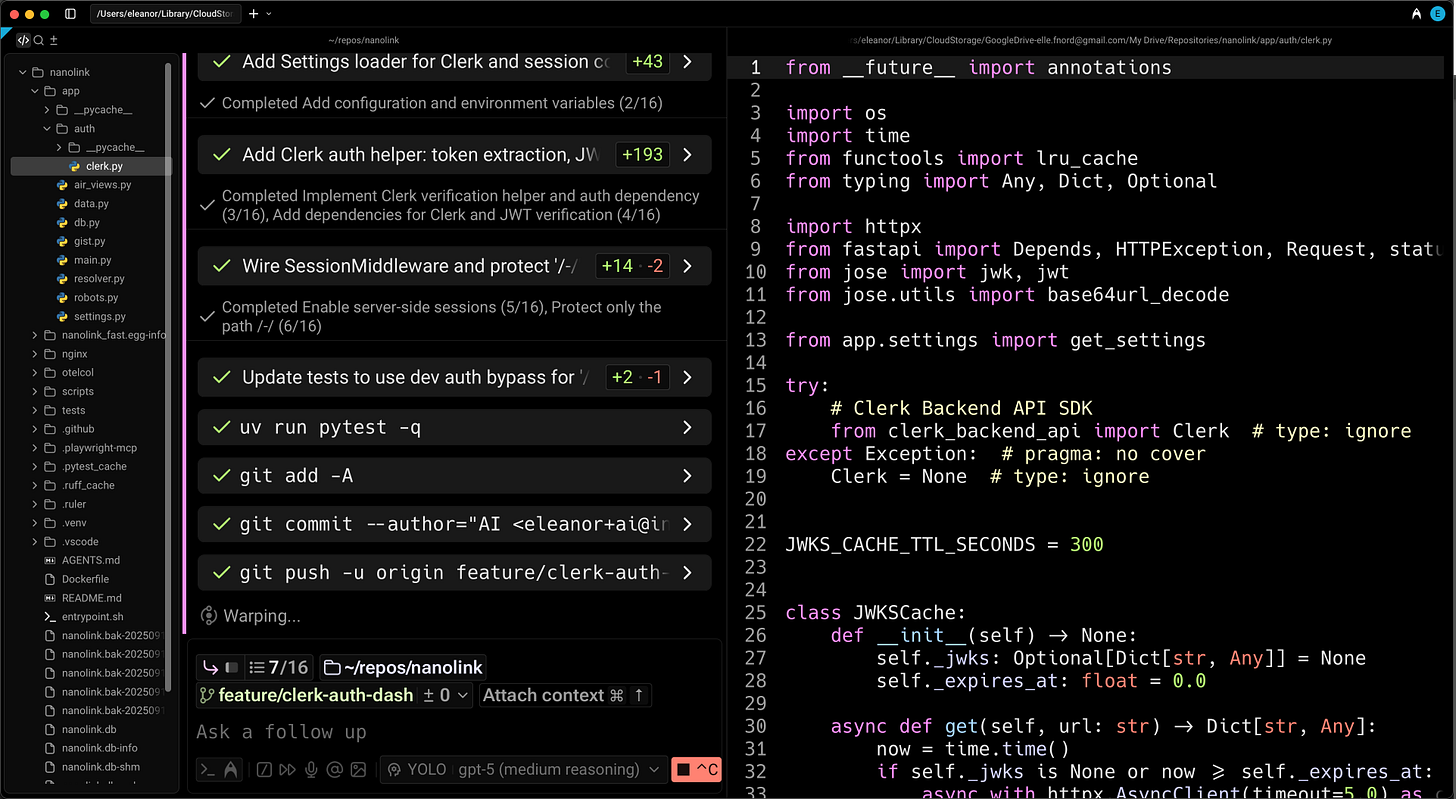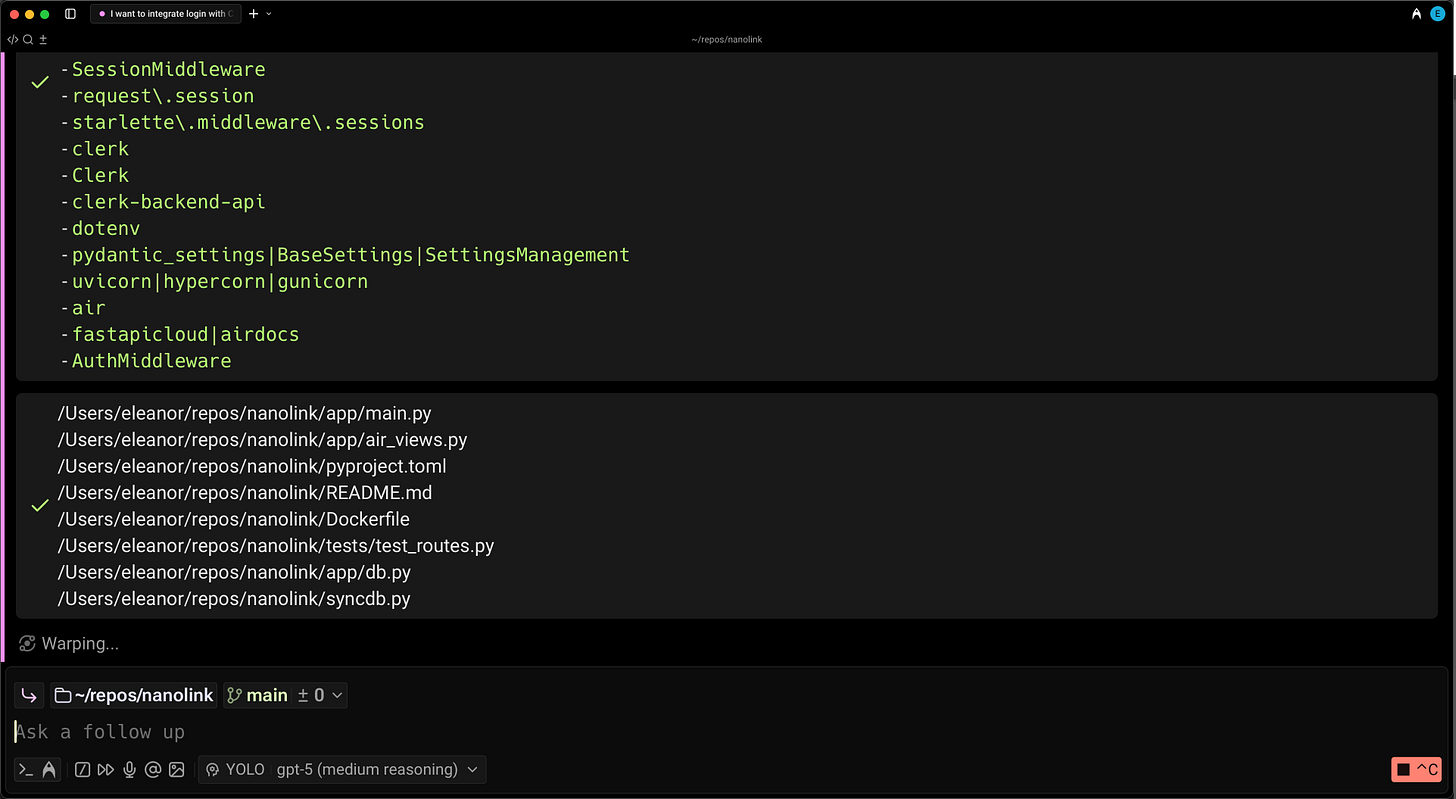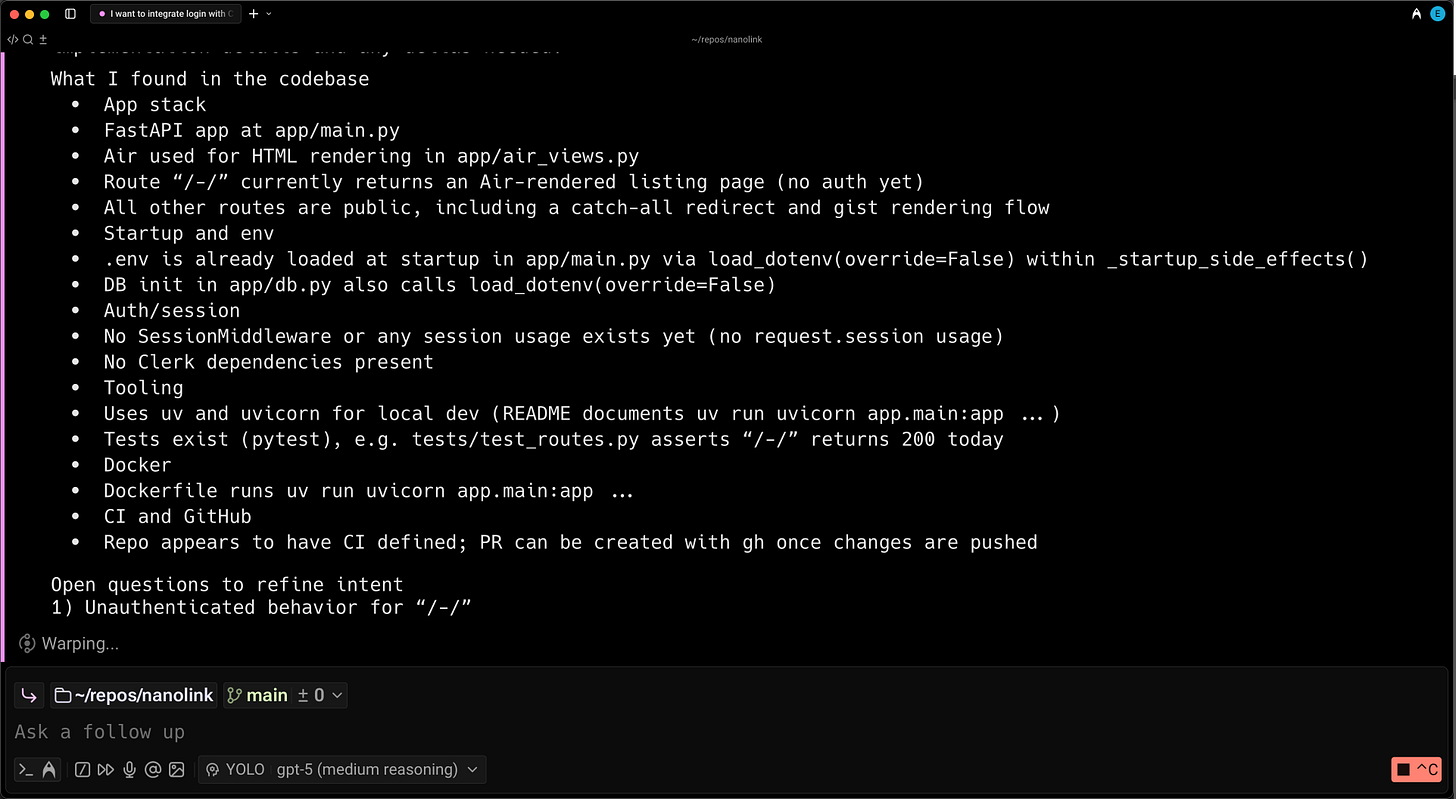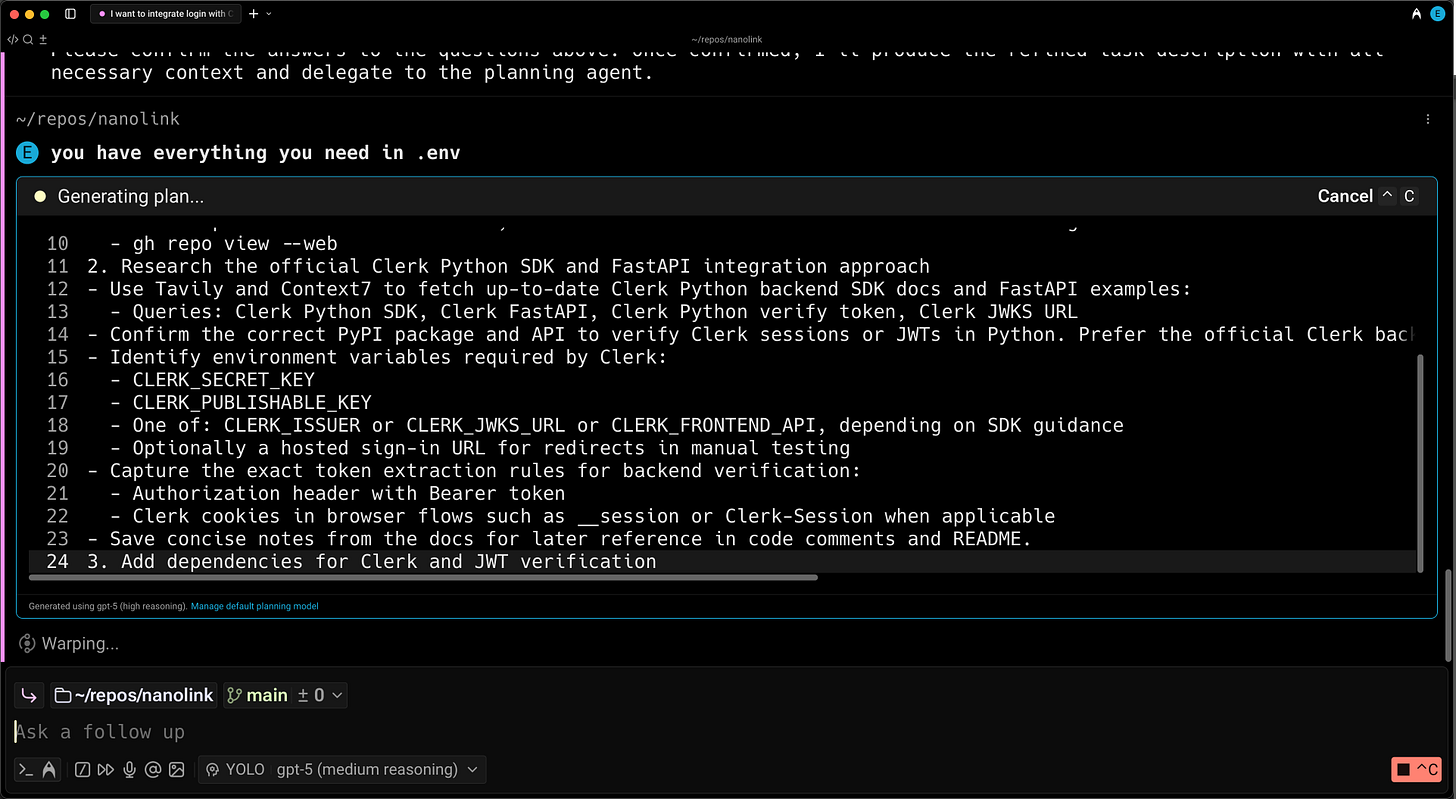Warp Tool Review
The Terminal Reimagined as an AI-Powered Coding Agent
Warp is a modern, Rust-based terminal that has been gaining traction for several years. It initially set itself apart with a reimagined user interface built around blocks, team collaboration features, and an enhanced user experience for common tasks like history search and command completion. However, in its recent evolution, Warp has leaned heavily into artificial intelligence, transforming from a feature-rich terminal into a comprehensive, agentic coding environment.
This review examines Warp's AI capabilities by putting them to a real-world test: integrating the authentication provider Clerk into an existing web application, a task handled entirely within the Warp terminal.
More Than a Shell: Core Features
Before diving into its AI, it is crucial to understand what makes Warp different from a standard terminal emulator. Its core philosophy revolves around improving the fundamental user experience.
Input Blocks: Instead of an endless scroll of text, Warp organizes every command and its output into a distinct, editable block. This makes it easy to navigate, copy, share, and re-run commands.
Warp Drive: This cloud-based system facilitates team collaboration. It allows users to share commands, workflows, and notebooks, turning the terminal into a shared workspace.
Workflows and Notebooks: Users can create and save parameterized commands (Workflows) and Markdown-based documents with executable code snippets (Notebooks). This streamlines repetitive tasks and helps document complex processes.
Modern UI: Features like a more intuitive command search, better autocompletion, and native UI elements are moved from the shell layer into the terminal application itself, providing a smoother and more discoverable experience.
The AI Agent Takes the Stage
Warp's AI features are not just an add-on; they are deeply integrated into the terminal's fabric. The platform has evolved into an agentic system that includes a coding agent, a file explorer, and a simple integrated editor. It can index entire repositories for context-aware search and AI operations. Users can invoke AI assistance through slash commands or engage the full agent for complex tasks.
To test this agent, I initiated a task to integrate Clerk into a web application. The process began with a single, detailed prompt outlining the requirements. Warp allows for custom AI modes, so for this long-running task, I switched to my pre-configured "YOLO" mode. This mode uses GPT-5-medium and is set to operate with minimal requests for user approval, making it suitable for tasks where the agent is trusted to proceed independently.
Planning and Execution: An Agent at Work
Upon receiving the prompt, the Warp agent shifted into its planning phase. Using a GPT-5 with high reasoning, it conducted research, reviewed relevant files in the repository, and consulted library documentation. The result was an impressively detailed, step-by-step plan for completing the integration.
A key advantage of Warp over other CLI-based agents is its control over the UI. The generated plan was not just text dumped into the shell; it was presented in a rich, embedded frame that could be easily reviewed, expanded, and collapsed. While the agent's tendency toward verbosity can sometimes be excessive for simple tasks, its thoroughness in the planning stage is a significant asset for complex projects, ensuring a higher quality result.
After I reviewed the plan and provided the location of an untracked file containing necessary environment variables, I gave the green light. The agent immediately created a to-do list, another custom UI element that can be expanded or collapsed to track progress. While the agent occasionally deviated from the list's exact order — a common trait among coding agents — it generally followed its own plan effectively.
The execution itself highlighted more of Warp's UI strengths. Tool calls and file modifications were reported inline, with expandable diff views that allowed for a clear and immediate review of changes. The integrated file explorer, while not a replacement for a full IDE, was sufficient for quickly locating and opening files in the built-in editor for manual inspection or minor tweaks.
Ultimately, the agent completed the task to specification with minimal intervention required. The process felt methodical, albeit sometimes a bit slow during model inference periods. However, Warp excels at managing multiple agents in parallel and provides clear notifications when user input is needed, making it a convenient environment for agentic workflows. Once the pull request was ready, I used a custom slash command I had previously created to merge the changes back to the main branch and clean up the local feature branch — a small but powerful example of how Warp streamlines daily developer chores.
Strengths and Weaknesses
Warp's approach presents a compelling new paradigm that sits between a traditional command-line interface and a full-fledged Integrated Development Environment (IDE).
Strengths:
Integrated Rich UI: The ability to render custom UI for plans, to-do lists, and diffs is a significant improvement over purely shell-based agents.
Capable Agent: The agent demonstrates strong planning and execution capabilities, which make it easy to handle complex tasks effectively.
Excellent for Ad-Hoc Assistance: For quick tasks like generating one-off scripts or constructing complex shell commands, the AI is an indispensable helper.
Weaknesses:
Excessive Verbosity: The agent's detailed reporting and planning, while often beneficial, can feel overwhelming for simpler tasks. There is currently no straightforward way to adjust this.
"Work in Progress" Feel: While stable, the AI features are evolving rapidly. The team releases updates almost weekly, but the product can sometimes feel unpolished or immature compared to more established tools.
Opaque Pricing Model: Warp's AI features require a paid subscription. Usage is metered, but the company is not transparent about how consumption is calculated, instead encouraging users to "develop an intuition" for costs. While my experience suggests the cost is not prohibitive compared to alternatives, the lack of clarity is a notable drawback, especially when competitors offer "bring-your-own-key" models or clear expectations for usage calculation.
Conclusion
Warp is an excellent product that successfully pushes the boundaries of what a terminal can be. Its core non-AI features alone make it a joy to use. The addition of a powerful, deeply integrated AI agent makes it an even more compelling tool for modern software development.
It excels as an environment for ad-hoc assistance and is demonstrably capable of handling end-to-end software engineering tasks. The rich UI provides a clear advantage over other terminal-based agents. It remains to be seen whether Warp can fully replace traditional IDEs for complex tasks. For developers who live in the terminal and want to leverage AI without leaving their primary workflow, Warp presents an exciting and powerful vision for the future of coding.










